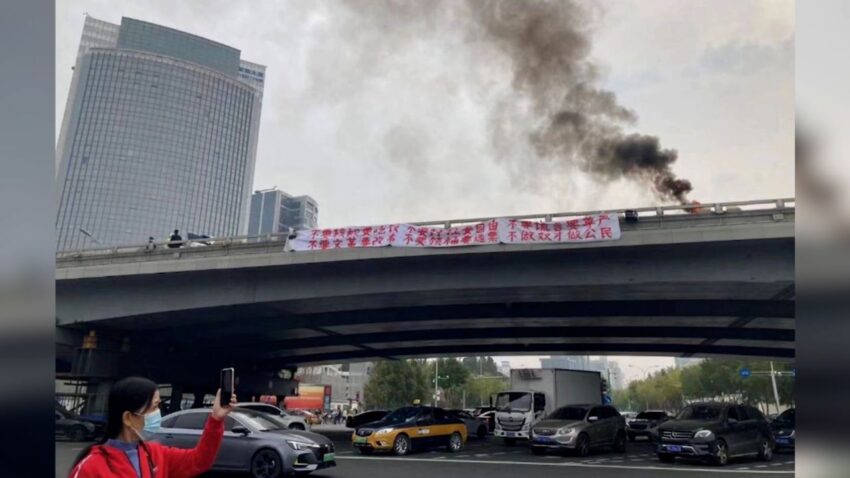Nelson A. Pryor: Guest Columnist
One 23-year-old woman had just arrived in London for a graduate program when she heard the news about the Sitong Bridge (China) banners. Prompted by Instagram posts showing signs hung by students in these united States, she printed flyers late at night and placed them around her school. It was the first time she had confronted her country’s political system. By the next week, she was attending her first demonstration, a rally outside the Chinese Embassy.
“I had no idea what it would be like, and I had no experience at all,” said Wu, not daring to identify herself further. Arriving at the London embassy, 10 fellow mainland Chinese students were already standing around. The act of confrontation was a new experience.
Stand up
One person suggested they begin chanting the Sitong Bridge slogans. “Life, not zero-covid policy; freedom, not lockdown; elections, not dictatorship.” But others worried the group wasn’t large enough to get any attention. Finally, they found their voice.
“At first, I felt a bit nervous to speak up, but by the second and third time around, I was really shouting the slogans,” said Wu. Soon, she was in tears. “Even though there weren’t many people, when you shout out loud, you can feel the courage between everyone, and it makes you less afraid.”
Not all is well in China
The Nov. 11, 2022 Washington Post 15a, ran this bold caption: “One man’s bold protest against China’s leaders inspires global copycats.” Posters, bearing the same slogans, almost immediately appeared at over 350 university campuses, around the world. Chinese authorities cracked down fast when a lone demonstrator, disguised as a construction worker draped two white banners over a busy Beijing overpass in October (2022), declaring for the ouster of Chinese leader Xi Jinping, just days before he would secure an historic third term.
The shutdown
The protestor was immediately detained and the banners pulled down. Mentions of the incident, including social media posts with the word “bridge” or “Beijing,” vanished within a few hours. Tweets by a 48-year-old scientist named Peng Lifa, and messages he left on ResearchGate - all almost identical to the banners’ slogans - were deleted.
But this is a different day. Ideas can’t be entirely erased. By the next day, posters bearing the same slogans have appeared at universities in these united States and Canada. Copycat demonstrations have since spread to more than 350 campuses around the world, organized by Chinese students who are tired of being regimented.
Peng, although never confirmed as the Sitong instigator, is now known as “Bridge Man” - an echo back to the unknown man who faced down a column of military tanks leaving Beijing’s Tiananmen Square, a day after the 1989 massacre there.
The spark
Chinese protestors are now building approaches honed on the mainland, which is under tight censorship. Just utilize the internet to overwhelm the censors with various iterations of the banned content. It’s called “pass the baton.” If the protest is generic, a spontaneous spark can take off, without a leader or organization.

